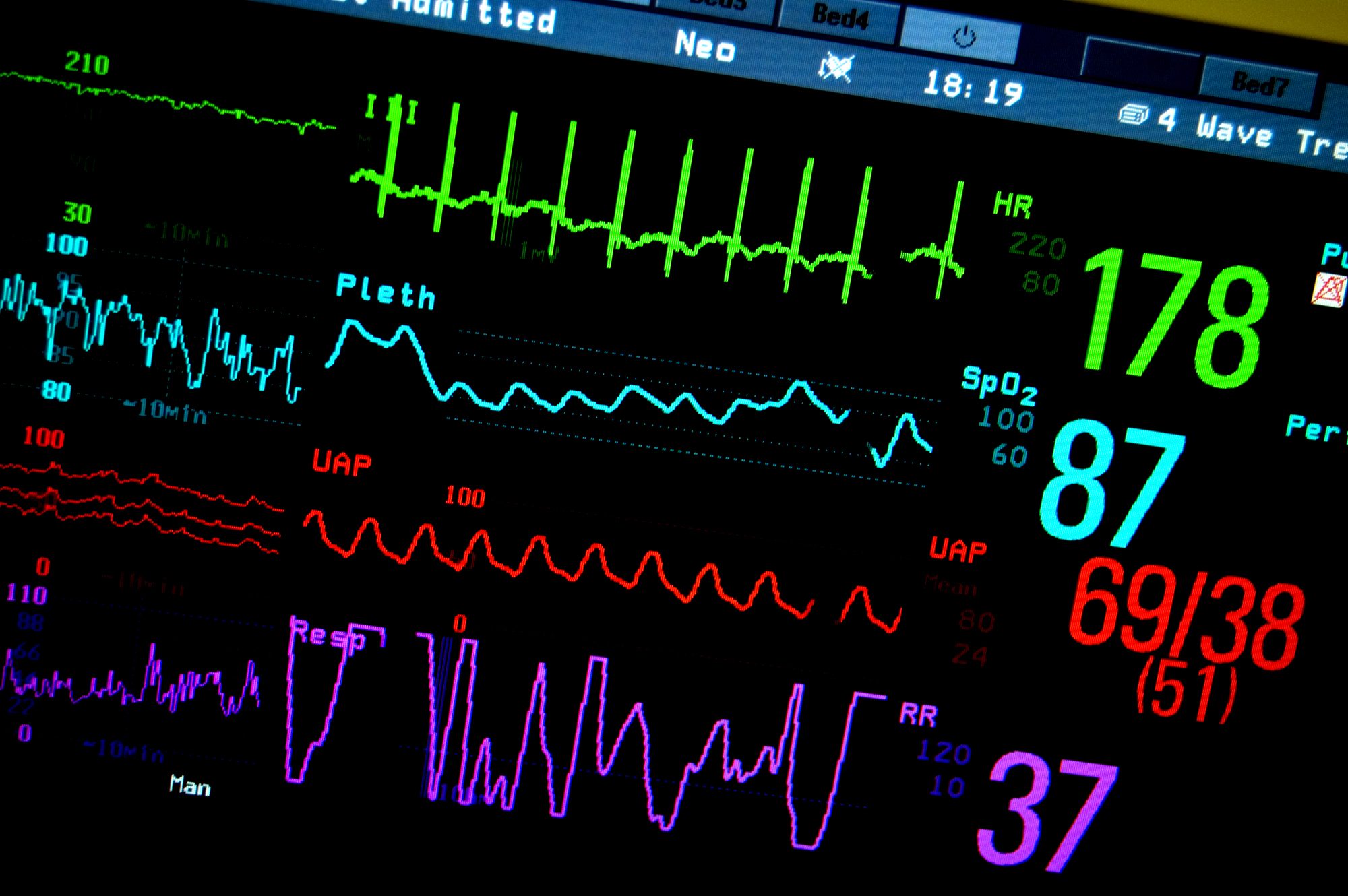
MONDAY, Nov. 15 (HealthDay News) — Although automated external defibrillators have been found to reduce heart attack death rates in public places such as restaurants, malls and airplanes, they have no benefit and, paradoxically, seem to increase the risk of death when used in hospitals, a new study suggests.
The reason may have to do with the type of heart rhythms associated with the heart attack, said researchers publishing the study in the Nov. 17 issue of the Journal of the American Medical Association, who are also scheduled to present their findings Monday at the American Heart Association (AHA) annual meeting in Chicago.
And that may have to do with how sick the patient is.
The authors only looked at hospitalized patients, who tend to be sicker than the average person out shopping or attending a sports event. In those settings, automated external defibrillators (AEDs), which restore normal heart rhythm with an electrical shock, have been shown to save lives.
“You are selecting people who are much sicker, who are in the hospital. You are dealing with heart attacks in much more sick people and therefore the reasons for dying are multiple,” said Dr. Valentin Fuster, past president of the AHA and director of Mount Sinai Heart in New York City. “People in the street or at a soccer game are much healthier.”
In this analysis of almost 12,000 people, only 16.3 percent of patients who had received a shock with an AED in the hospital survived versus 19.3 percent of those who didn’t receive a shock, translating to a 15 percent lower odds of surviving.
The differences were even more acute among patients with the type of rhythm that doesn’t respond to these shocks. Only 10.4 percent of these patients who were defibrillated survived versus 15.4 percent who were not, a 26 percent lower rate of survival, according to the report.
For those who had rhythms that do respond to such shocks, however, about the same percentage of patients in both groups survived (38.4 percent versus 39.8 percent).
But over 80 percent of hospitalized patients in this study had non-shockable rhythms, the study authors noted.
In public settings, some 45 percent to 71 percent of cases will respond to defibrillation, according to the study authors.
The disparity in survival is quite possibly due to the fact that valuable time that could have been spent resuscitating the patient with other methods is instead wasted on deploying an AED.
“The more time you waste during resuscitation using ineffective procedures, the more likely you are to have adverse outcomes,” said Dr. Jeffrey S. Borer, chair of the department of medicine and of cardiovascular medicine at the State University of New York Downstate Medical Center in New York City.
“The importance of chest compression to maintain circulation has gained greater importance in the view of researchers in the field recently, and training in resuscitation has just begun to incorporate these new concepts,” he continued. “The capacity to perform efficient resuscitations is not universally available among hospital personnel and the use of AEDs therefore might be expected to be less efficient among most hospital personnel. Even if an AED could be effectively used by an appropriately trained person, it could be ineffectively used by everyone else.”
Hospitals across the nation are installing these portable AED heart-shockers intending to boost survival rates among heart attack patients.
According to background information in the study, upwards of 50,000 AED units were sold to U.S. hospitals between 2003 and 2008 with market growth expected to continue shooting up. More than one-third of the 550 hospitals included in this study had AEDs.
“A lot of money is being spent and the resuscitation rate is truly significantly lower among patients in whom AEDs are deployed in hospitals,” Borer said. “We have to rethink seriously the way resuscitations are being carried out in hospitals, who uses what when. The study certainly is of sufficient concern so that it should lead to studies that are designed to evaluate this issue in a more appropriate, comprehensive way.”
More information
The American Heart Association has more on automated external defibrillators.

